 Before I left,
Jean-Pierre showed me a picture of screens at the Prada
Epicentre in Aoyama, Tokyo. So I set off to find it. Big name
labels are everywhere in Japan. In particular, on this
street.
Before I left,
Jean-Pierre showed me a picture of screens at the Prada
Epicentre in Aoyama, Tokyo. So I set off to find it. Big name
labels are everywhere in Japan. In particular, on this
street."Japan is probably the most expensive country in the world for travel..."
Lonely Planet World Guide, Japan, Money and Costs
 Before I left,
Jean-Pierre showed me a picture of screens at the Prada
Epicentre in Aoyama, Tokyo. So I set off to find it. Big name
labels are everywhere in Japan. In particular, on this
street.
Before I left,
Jean-Pierre showed me a picture of screens at the Prada
Epicentre in Aoyama, Tokyo. So I set off to find it. Big name
labels are everywhere in Japan. In particular, on this
street.
Dior had a wonderful screen made of LED strips. The strips were separated by gaps, so that you could see through them. It was surprisingly effective.
 Louis Vuitton
obviously used the same architect that we did. This is the sort
of look that the Fed Sq architects were suggesting for Fashion
and Textiles. Interestingly, the designers don't try to account
for the gap. The image is just split across the centre.
Louis Vuitton
obviously used the same architect that we did. This is the sort
of look that the Fed Sq architects were suggesting for Fashion
and Textiles. Interestingly, the designers don't try to account
for the gap. The image is just split across the centre.
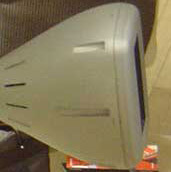 It was wet, it was cold, it was dark. I was
tired. Finally, I found the Prada Aoyama Epicentre. It was
amazing. The store was purpose built, along the same aesthetic
as the Fed Sq atrium. All glass triangles in a crazy maze.
It was wet, it was cold, it was dark. I was
tired. Finally, I found the Prada Aoyama Epicentre. It was
amazing. The store was purpose built, along the same aesthetic
as the Fed Sq atrium. All glass triangles in a crazy maze.
Inside were these crazy touchscreens and some projectors showing mood colours.
 Most of the
multimedia that I saw in galleries and museums was pretty
straight-forward. Explanatory video playing in small
theatrettes or single booths, mostly in Japanese. The Hiroshima
Peace Museum had brief sub-titles in English and some screens
with snippets of text in a plethora of languages.
Most of the
multimedia that I saw in galleries and museums was pretty
straight-forward. Explanatory video playing in small
theatrettes or single booths, mostly in Japanese. The Hiroshima
Peace Museum had brief sub-titles in English and some screens
with snippets of text in a plethora of languages.
 The Museum of
Western Art in Ueno Park, Tokyo had a touchscreen set-up that
allowed access to high resolution images of the collection.
The Museum of
Western Art in Ueno Park, Tokyo had a touchscreen set-up that
allowed access to high resolution images of the collection.
After navigating your way though the collection, you could see a very high resolution image on a large LCD screen. You sat in a small darkened area, with enough space for two or three people per screen. You can't see it here, but there is another screen set-up opposite this one.
 You could zoom in on
chosen parts of the image, including a simple crop to fill the
screen. From memory, there was a small amount of didactic text
with each image. The images, being big and clear and right in
front of you, were beautiful.
You could zoom in on
chosen parts of the image, including a simple crop to fill the
screen. From memory, there was a small amount of didactic text
with each image. The images, being big and clear and right in
front of you, were beautiful.
 The equipment was
straight-forward, but impressive. Because it was dark, you
couldn't really see it when you were in the room. There was a
very large LCD screen with three computers in a very holey
box.
The equipment was
straight-forward, but impressive. Because it was dark, you
couldn't really see it when you were in the room. There was a
very large LCD screen with three computers in a very holey
box.
The other thing that they had at this place was a little simulator showing how they had protected Rodin's Gates of Hell from earthquakes. You pushed a button and the whole model shook, showing that the sculpture shook much less than the surroundings. Simple and a bit of fun.
For my money, the best use of multimedia that I saw was at the Noritake Studio in Nagoya. Little video screens led you through the process of making Noritake bone china. At each video, there were real live artisans working on the various tasks. So, along with a little video showing how the casts are made, there was a man making casts. When they described hand-painting the china, there was someone actually painting the china. Wonderful!
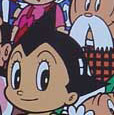 The
Japanese love their manga. It's not just for kids. And it isn't
just in comics. It is everywhere, particularly in signage. If
you think about it, these sorts of images are perfect for
signage. They are simple, clear and universal. Done properly,
they need no text.
The
Japanese love their manga. It's not just for kids. And it isn't
just in comics. It is everywhere, particularly in signage. If
you think about it, these sorts of images are perfect for
signage. They are simple, clear and universal. Done properly,
they need no text.
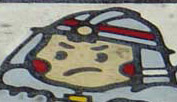 This is a fire
hydrant cover in Tokyo. It is set in to the pavement, and they
are all over the city. Dressed as little samurai firemen, they
are clearly working hard on your behalf. Somehow, I can't
imagine the Melbourne Metropolitan Fire Brigade going for
something like this.
This is a fire
hydrant cover in Tokyo. It is set in to the pavement, and they
are all over the city. Dressed as little samurai firemen, they
are clearly working hard on your behalf. Somehow, I can't
imagine the Melbourne Metropolitan Fire Brigade going for
something like this.
 Believe
it or not, this is a No Parking sign in Kyoto. We saw lots of
this little guy. He seemed to be the standard representation of
a policeman. On the back of this sign there was kanji, which
presumably spelt out a dire warning.
Believe
it or not, this is a No Parking sign in Kyoto. We saw lots of
this little guy. He seemed to be the standard representation of
a policeman. On the back of this sign there was kanji, which
presumably spelt out a dire warning.
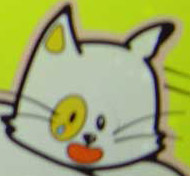 My
personal favourite. This little guy is on the subway doors in
Tokyo. He is telling you that if you aren't careful, you might
get caught in the doors. On the platform side of the doors,
there is another image, showing him hitting the closed doors
head on. He is funny, but sympathetic. And he gets the message
across. The doors aren't open for long.
My
personal favourite. This little guy is on the subway doors in
Tokyo. He is telling you that if you aren't careful, you might
get caught in the doors. On the platform side of the doors,
there is another image, showing him hitting the closed doors
head on. He is funny, but sympathetic. And he gets the message
across. The doors aren't open for long.
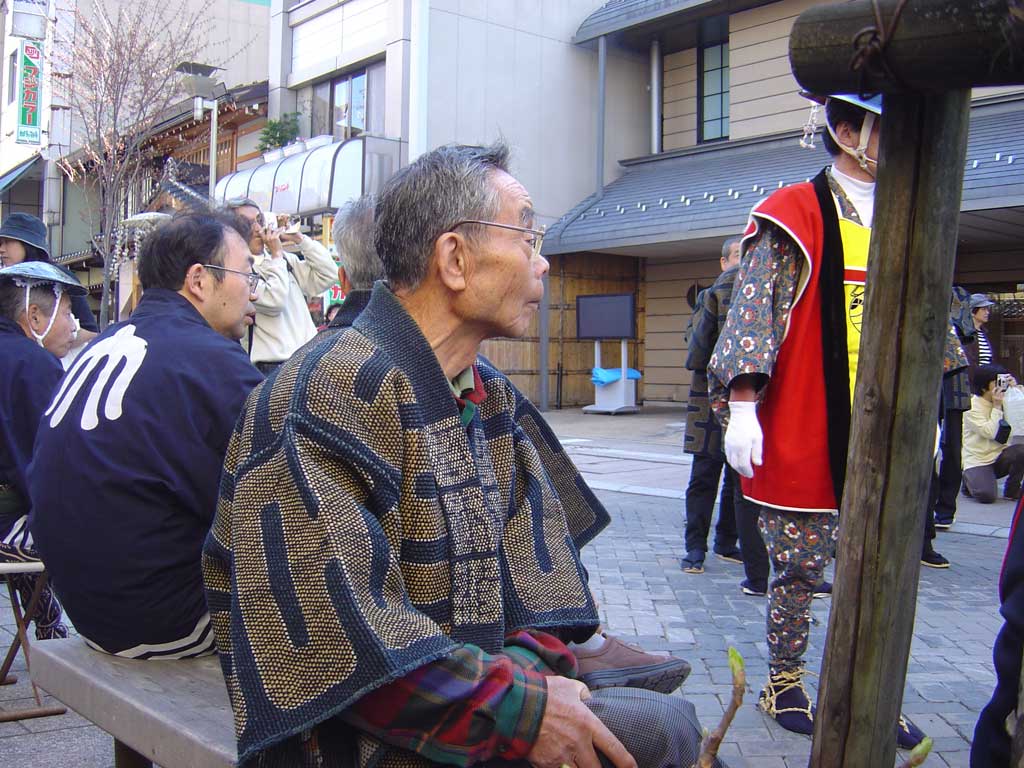 Japan
really is a very safe place. These signs survive because there
is virtually no graffiti. There is also virtually no theft.
This scene is from a festival in the small city of Takayma. It
was very busy, with lots of strangers about. A prime place for
theft in most places in the world.
Japan
really is a very safe place. These signs survive because there
is virtually no graffiti. There is also virtually no theft.
This scene is from a festival in the small city of Takayma. It
was very busy, with lots of strangers about. A prime place for
theft in most places in the world.